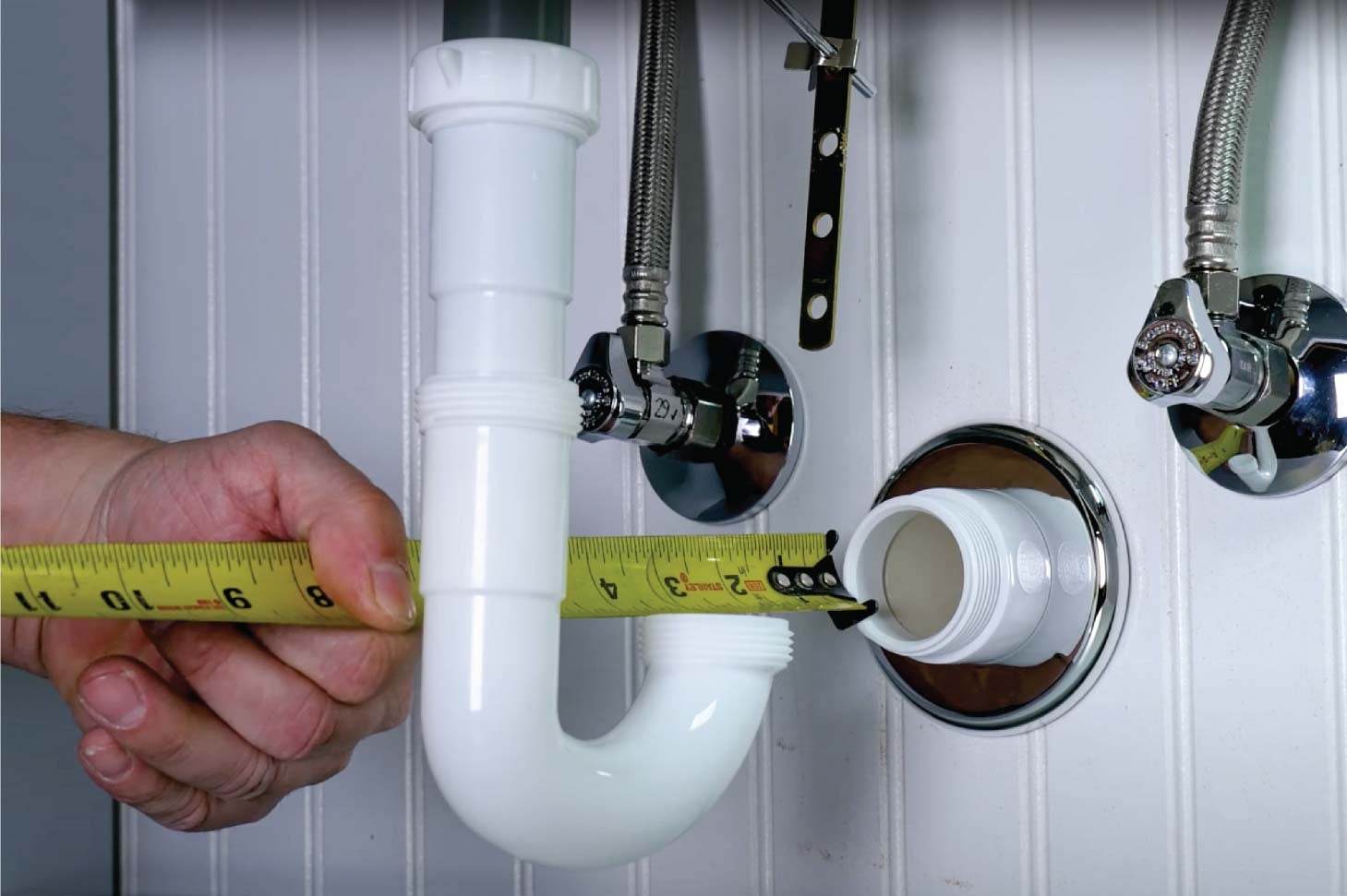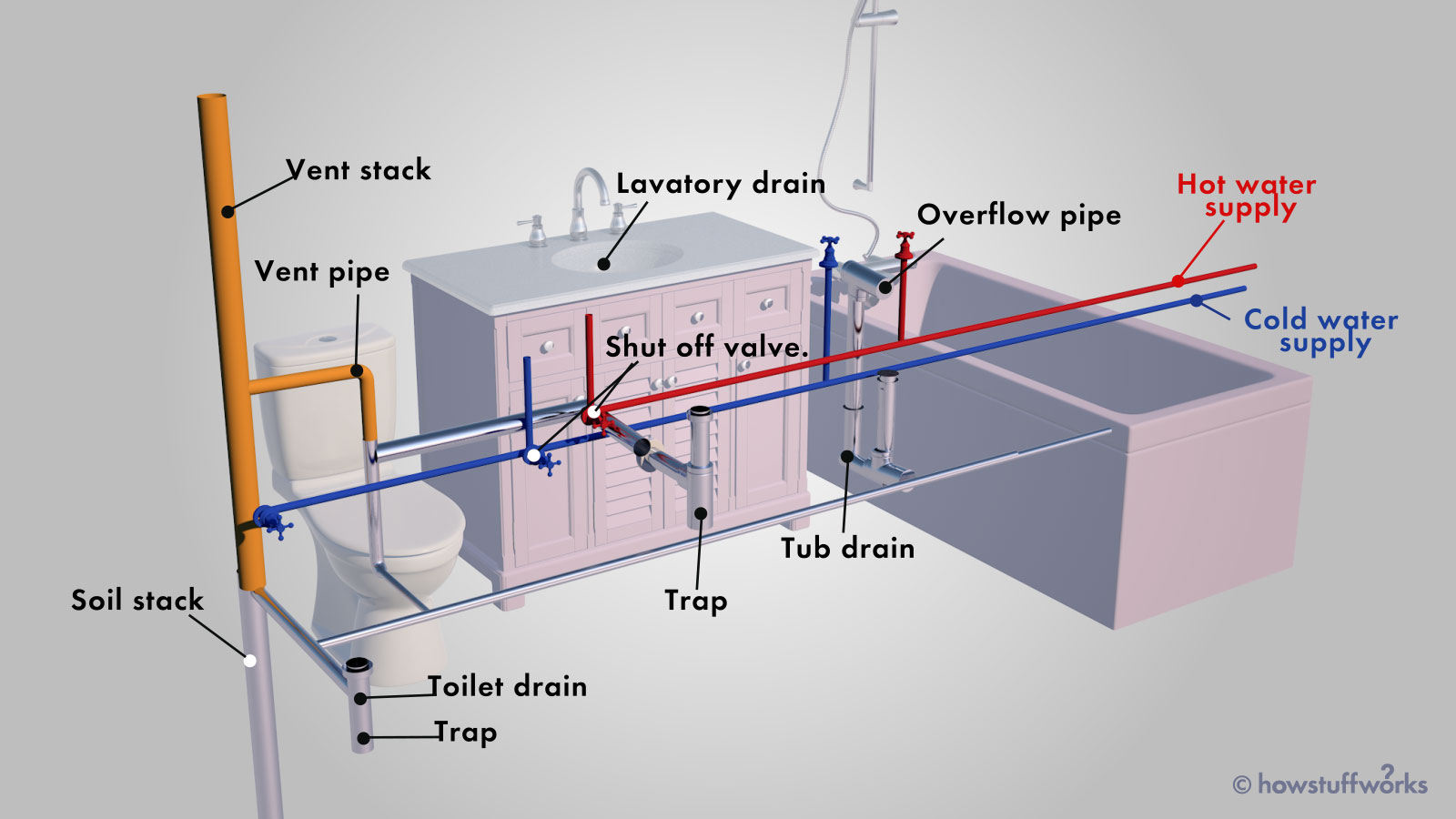The Layout of Your Home's Plumbing System Explained
Book-NowThe publisher is making a few great points relating to Plumbing Installation 101: All You Need to Know in general in the article directly below.

Understanding just how your home's plumbing system works is necessary for every single homeowner. From providing tidy water for alcohol consumption, cooking, and bathing to safely eliminating wastewater, a properly maintained pipes system is essential for your household's health and comfort. In this thorough guide, we'll explore the complex network that composes your home's pipes and offer pointers on upkeep, upgrades, and managing usual issues.
Introduction
Your home's pipes system is greater than simply a network of pipes; it's a complicated system that guarantees you have accessibility to tidy water and efficient wastewater removal. Understanding its elements and just how they collaborate can help you avoid expensive repair services and guarantee everything runs smoothly.
Basic Components of a Plumbing System
Pipelines and Tubes
At the heart of your pipes system are the pipelines and tubes that lug water throughout your home. These can be made of numerous products such as copper, PVC, or PEX, each with its benefits in terms of durability and cost-effectiveness.
Fixtures: Sinks, Toilets, Showers, and so on.
Components like sinks, bathrooms, showers, and bath tubs are where water is utilized in your house. Recognizing just how these fixtures attach to the pipes system helps in detecting issues and preparing upgrades.
Valves and Shut-off Factors
Valves regulate the circulation of water in your pipes system. Shut-off valves are essential throughout emergency situations or when you need to make repairs, permitting you to isolate parts of the system without interrupting water flow to the whole house.
Water Supply System
Key Water Line
The primary water line attaches your home to the local water or a personal well. It's where water enters your home and is distributed to numerous fixtures.
Water Meter and Stress Regulator
The water meter procedures your water usage, while a stress regulator makes certain that water flows at a risk-free pressure throughout your home's pipes system, avoiding damages to pipes and fixtures.
Cold Water vs. Warm water Lines
Comprehending the distinction in between cold water lines, which supply water straight from the primary, and hot water lines, which lug warmed water from the hot water heater, aids in troubleshooting and preparing for upgrades.
Water drainage System
Drain Pipes and Traps
Drain pipes carry wastewater far from sinks, showers, and toilets to the sewage system or sewage-disposal tank. Catches stop sewage system gases from entering your home and likewise trap debris that can cause obstructions.
Ventilation Pipelines
Ventilation pipelines enable air into the water drainage system, stopping suction that could reduce drain and create traps to vacant. Appropriate air flow is necessary for keeping the stability of your pipes system.
Importance of Proper Drainage
Ensuring appropriate water drainage stops backups and water damages. On a regular basis cleansing drains pipes and keeping traps can avoid expensive fixings and extend the life of your pipes system.
Water Heating System
Kinds Of Hot Water Heater
Hot water heater can be tankless or standard tank-style. Tankless heaters warm water as needed, while tanks save heated water for immediate usage.
Just How Water Heaters Attach to the Plumbing System
Understanding exactly how hot water heater connect to both the cold water supply and hot water circulation lines helps in identifying concerns like insufficient hot water or leaks.
Upkeep Tips for Water Heaters
Consistently flushing your hot water heater to eliminate debris, checking the temperature level setups, and examining for leakages can extend its lifespan and boost power effectiveness.
Common Pipes Issues
Leaks and Their Causes
Leakages can take place due to maturing pipelines, loosened fittings, or high water pressure. Attending to leakages without delay avoids water damage and mold growth.
Blockages and Clogs
Obstructions in drains pipes and bathrooms are commonly caused by flushing non-flushable things or a build-up of grease and hair. Utilizing drainpipe displays and bearing in mind what decreases your drains can avoid clogs.
Indicators of Pipes Troubles to Expect
Low tide pressure, slow-moving drains pipes, foul odors, or uncommonly high water bills are indicators of potential plumbing problems that should be dealt with quickly.
Plumbing Maintenance Tips
Routine Examinations and Checks
Set up annual plumbing evaluations to catch issues early. Look for signs of leakages, rust, or mineral accumulation in taps and showerheads.
Do It Yourself Upkeep Tasks
Basic tasks like cleaning tap aerators, looking for bathroom leaks making use of color tablet computers, or insulating exposed pipes in cold environments can protect against major plumbing concerns.
When to Call a Specialist Plumber
Know when a pipes problem requires professional knowledge. Attempting complex repairs without appropriate expertise can bring about even more damages and greater repair work prices.
Upgrading Your Pipes System
Reasons for Upgrading
Upgrading to water-efficient fixtures or changing old pipes can improve water quality, reduce water bills, and increase the worth of your home.
Modern Pipes Technologies and Their Advantages
Discover modern technologies like wise leak detectors, water-saving toilets, and energy-efficient water heaters that can save money and lower ecological effect.
Cost Considerations and ROI
Calculate the ahead of time prices versus lasting savings when considering pipes upgrades. Lots of upgrades pay for themselves through lowered energy expenses and fewer fixings.
Ecological Effect and Preservation
Water-Saving Components and Home Appliances
Mounting low-flow faucets, showerheads, and bathrooms can considerably decrease water use without giving up efficiency.
Tips for Decreasing Water Usage
Straightforward practices like fixing leakages without delay, taking much shorter showers, and running full lots of laundry and dishes can preserve water and lower your energy expenses.
Eco-Friendly Pipes Options
Take into consideration lasting pipes materials like bamboo for flooring, which is durable and green, or recycled glass for counter tops.
Emergency situation Preparedness
Steps to Take During a Pipes Emergency situation
Know where your shut-off shutoffs are located and how to shut off the water in case of a burst pipe or major leak.
Importance of Having Emergency Situation Get In Touches With Handy
Keep call information for neighborhood plumbings or emergency solutions easily available for fast response throughout a plumbing dilemma.
Do It Yourself Emergency Fixes (When Appropriate).
Momentary repairs like making use of duct tape to patch a leaking pipeline or positioning a pail under a trickling tap can lessen damages up until an expert plumbing technician shows up.
Conclusion.
Recognizing the makeup of your home's pipes system equips you to preserve it successfully, saving time and money on repairs. By adhering to routine maintenance regimens and staying educated regarding modern pipes innovations, you can guarantee your plumbing system runs successfully for several years to come.
HOW YOUR PLUMBING SYSTEM WORKS
Which Pipes Do What?
Blue lines = fresh water supply entering the building
Red lines = hot water supply entering the building
Grey lines = pipes carrying waste away from the building and venting pipes carrying gases away from the building (through the roof)
YOUR MAIN PLUMBING SYSTEMS
There are two main plumbing systems that support your home s basic plumbing needs one that brings clean water into your home, and one that sends dirty water away from your home. Connected to the toilet, bath, shower, and other faucets in your home, these two systems keep your water flowing in the right directions.
ACCESSING FRESH WATER
Fresh and clean water is brought into your home through the main water supply line . Filtered through one pipe, this water is pressured to flow into the various fixtures in your home at any given time.
This water can be sourced from a well located on your property, a pond or river (mostly cottages), or, as in most cases, from the city s municipal water treatment centre. However, it is important to note that water that is untreated, such as the water siphoned from ponds or rivers, may not be safe to drink. Personal water supplies always need to be treated for hardness and contaminants before consumed.
MUNICIPAL WATER SUPPLIES
Improve taste and odour
Remove sediment
Eliminate hardness
Reduce chlorine
COLD WATER SUPPLY VS. HOT WATER SUPPLY
Cold water flows into your home or building through the service line, which then distributes hot or cold water to your fixtures. This line is most commonly run through a central column that runs floor to floor. Hot water runs in short and straight pipes as the longer the pipeline, the more heat that will be lost in the transfer. Having shorter pipes also allows residents to access hot water more quickly.
WASTE WATER SYSTEM
Your wastewater system is divided into two parts pipes that send wastewater away from your home and venting pipes that send sewer gas away from your home. Sewage water travels through pipes that flush the water and waste towards local sewers that are operated and managed by your city or town. Most sewer systems rely on gravity to move the wastewater to where it needs to go.
The further away from your toilet or sink, the larger wastewater pipes become. This allows for waste to be disposed of from various parts of your home or business at once without pipe blockages. The angle and flow of these pipes are also essential for keeping your waste pipes clear of build up.
https://harrisplumbing.ca/how-your-home-plumbing-system-works/

HOW YOUR PLUMBING SYSTEM WORKS
Which Pipes Do What?
YOUR MAIN PLUMBING SYSTEMS
There are two main plumbing systems that support your home s basic plumbing needs one that brings clean water into your home, and one that sends dirty water away from your home. Connected to the toilet, bath, shower, and other faucets in your home, these two systems keep your water flowing in the right directions.
ACCESSING FRESH WATER
Fresh and clean water is brought into your home through the main water supply line . Filtered through one pipe, this water is pressured to flow into the various fixtures in your home at any given time.
This water can be sourced from a well located on your property, a pond or river (mostly cottages), or, as in most cases, from the city s municipal water treatment centre. However, it is important to note that water that is untreated, such as the water siphoned from ponds or rivers, may not be safe to drink. Personal water supplies always need to be treated for hardness and contaminants before consumed.
MUNICIPAL WATER SUPPLIES
COLD WATER SUPPLY VS. HOT WATER SUPPLY
Cold water flows into your home or building through the service line, which then distributes hot or cold water to your fixtures. This line is most commonly run through a central column that runs floor to floor. Hot water runs in short and straight pipes as the longer the pipeline, the more heat that will be lost in the transfer. Having shorter pipes also allows residents to access hot water more quickly.
WASTE WATER SYSTEM
Your wastewater system is divided into two parts pipes that send wastewater away from your home and venting pipes that send sewer gas away from your home. Sewage water travels through pipes that flush the water and waste towards local sewers that are operated and managed by your city or town. Most sewer systems rely on gravity to move the wastewater to where it needs to go.
The further away from your toilet or sink, the larger wastewater pipes become. This allows for waste to be disposed of from various parts of your home or business at once without pipe blockages. The angle and flow of these pipes are also essential for keeping your waste pipes clear of build up.
https://harrisplumbing.ca/how-your-home-plumbing-system-works/
Do you like reading up on The Inner Workings of Your Home's Plumbing? Place feedback down the page. We will be glad to listen to your responses about this content. We are looking forward that you visit us again soon. Those who liked our blog post kindly make sure you remember to pass it around. Thanks a lot for going through it.
Set An Appointment